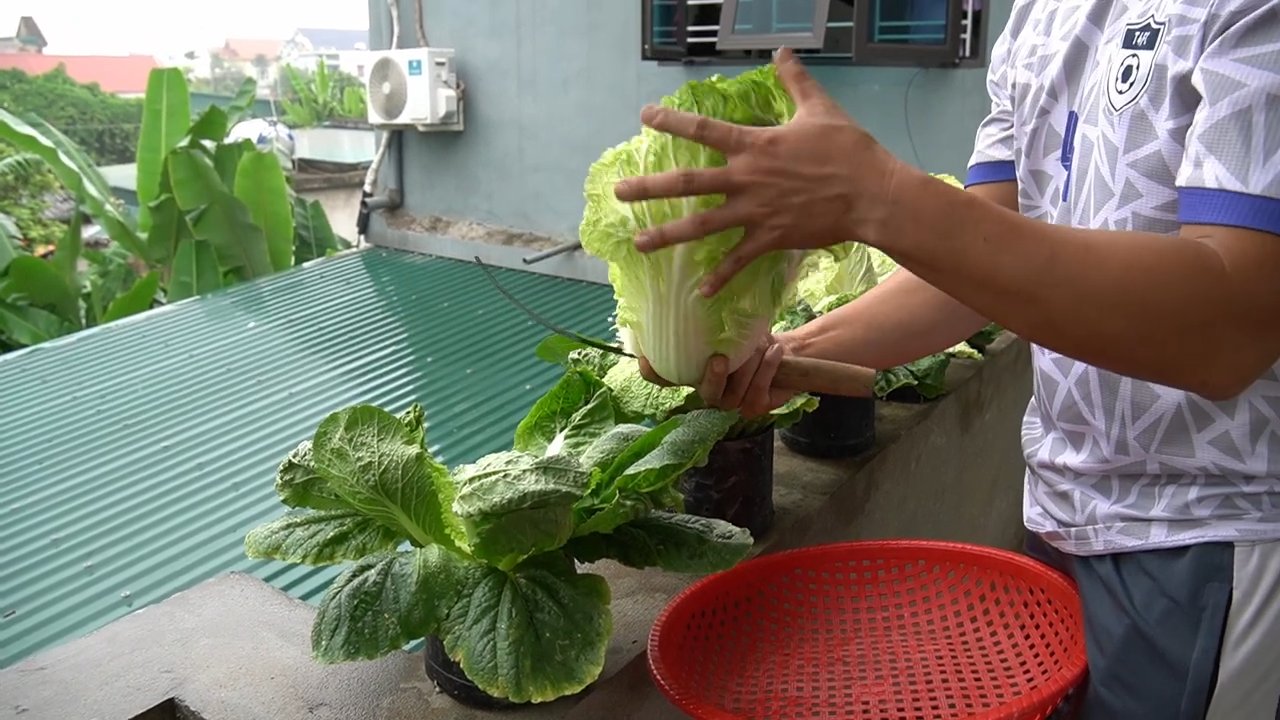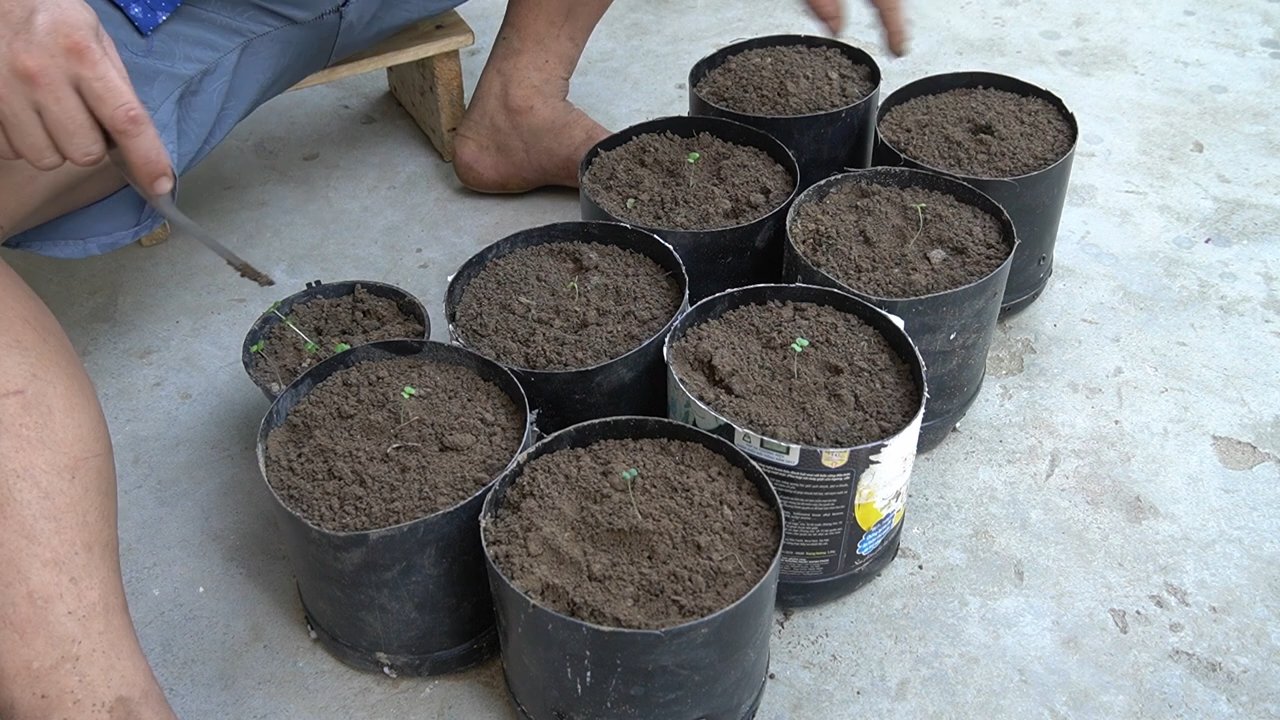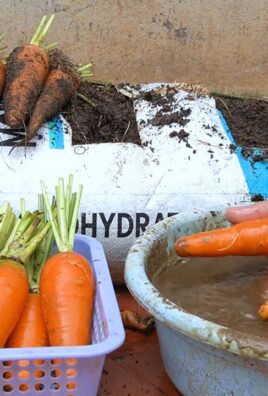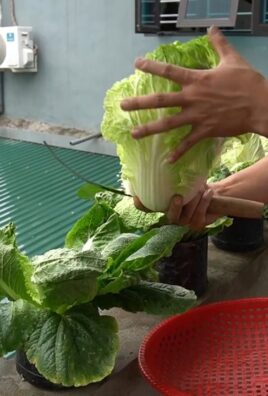DIY Balcony Lettuce Garden: Imagine stepping onto your balcony and plucking fresh, crisp lettuce leaves for your salad, sandwich, or even a quick snack. Sounds idyllic, right? Well, it’s more achievable than you think! For centuries, humans have cultivated gardens in even the most unlikely of places, from window boxes in bustling cities to terraced hillsides in ancient civilizations. This deep-rooted connection to growing our own food is now experiencing a resurgence, especially among urban dwellers.
But let’s face it, not everyone has a sprawling backyard. That’s where the magic of a DIY Balcony Lettuce Garden comes in! This isn’t just about saving money on groceries (though that’s a definite perk!). It’s about connecting with nature, reducing your carbon footprint, and experiencing the pure joy of nurturing something from seed to harvest. Plus, who wouldn’t want a beautiful, edible green space right outside their door?
In this article, I’m going to share some simple yet effective tricks and hacks to help you create your very own thriving lettuce garden, even if you only have a small balcony. We’ll cover everything from choosing the right containers and soil to selecting the best lettuce varieties and keeping those pesky pests at bay. So, grab your gardening gloves, and let’s get started on this exciting journey to fresh, homegrown goodness!

DIY Balcony Lettuce Garden: Fresh Greens at Your Fingertips!
Hey there, fellow balcony gardeners! I’m so excited to share this super easy and rewarding DIY project with you: creating your very own lettuce garden right on your balcony. Imagine fresh, crisp lettuce just steps away from your kitchen – perfect for salads, sandwiches, and adding a healthy boost to any meal. Trust me, even if you think you have a “brown thumb,” you can totally do this!
This guide will walk you through everything you need to know, from choosing the right containers and soil to planting and caring for your leafy greens. Let’s get started!
Choosing Your Lettuce Varieties
First things first, let’s talk lettuce! There are so many delicious varieties to choose from, and the best part is, many of them thrive in containers. Here are a few of my favorites that I’ve had great success with on my balcony:
* Loose-leaf lettuce: This is probably the easiest type to grow. Varieties like ‘Black Seeded Simpson,’ ‘Red Sails,’ and ‘Oak Leaf’ are quick to mature and you can harvest leaves as needed without pulling up the whole plant.
* Butterhead lettuce: These form loose heads with soft, buttery leaves. ‘Buttercrunch’ and ‘Tom Thumb’ are popular choices.
* Romaine lettuce: For those classic Caesar salads! ‘Paris Island Cos’ is a reliable variety.
* Mesclun Mix: Why choose just one? Mesclun mixes are blends of different lettuce varieties and other greens, offering a variety of flavors and textures.
Tip: Consider the amount of sunlight your balcony receives. Some lettuce varieties are more tolerant of shade than others. Loose-leaf lettuces generally do well with less direct sunlight.
Gathering Your Supplies
Okay, now that we’ve got our lettuce dreams sorted, let’s gather the supplies we’ll need. This is where the “DIY” part really shines – you can often repurpose items you already have!
* Containers: This is where you can get creative!
* Pots: Choose pots that are at least 6 inches deep and wide. The bigger, the better, as it gives the lettuce roots more room to grow.
* Window boxes: These are perfect for maximizing space on a narrow balcony.
* Hanging baskets: A fun and space-saving option! Just make sure they’re sturdy enough to hold the weight of the soil and plants.
* Repurposed containers: Think old buckets, plastic tubs, or even wooden crates. Just make sure they have drainage holes!
* Potting Mix: This is crucial! Don’t use garden soil – it’s too heavy and doesn’t drain well in containers. Look for a good quality potting mix specifically designed for containers. I prefer a mix that contains peat moss, perlite, and vermiculite for good drainage and aeration.
* Lettuce Seeds or Seedlings: You can start from seed or buy seedlings from your local garden center. Starting from seed is more economical, but seedlings will give you a head start.
* Watering Can or Hose: For keeping your lettuce happy and hydrated.
* Fertilizer (Optional): A balanced liquid fertilizer can help boost growth, but it’s not essential.
* Trowel or Small Shovel: For planting.
* Gardening Gloves (Optional): To keep your hands clean.
* Labels (Optional): To keep track of what you planted where.
Step-by-Step Planting Guide
Alright, let’s get our hands dirty! Here’s a step-by-step guide to planting your balcony lettuce garden:
1. Prepare Your Containers
* Clean your containers: If you’re using repurposed containers, make sure they’re clean and free of any debris.
* Ensure drainage: If your containers don’t have drainage holes, drill some! Lettuce needs good drainage to prevent root rot.
* Line the bottom (optional): You can line the bottom of your containers with landscape fabric or coffee filters to prevent soil from washing out through the drainage holes.
2. Fill with Potting Mix
* Fill your containers with potting mix: Leave about an inch or two of space at the top.
* Moisten the soil: Gently water the potting mix until it’s evenly moist but not soggy.
3. Planting Seeds (If Starting from Seed)
* Sow the seeds: Sprinkle the lettuce seeds evenly over the surface of the soil.
* Cover lightly: Cover the seeds with a very thin layer of potting mix (about 1/4 inch).
* Water gently: Water the seeds gently with a spray bottle or watering can with a rose attachment to avoid disturbing them.
* Keep moist: Keep the soil consistently moist until the seeds germinate, which usually takes about 7-14 days.
4. Planting Seedlings (If Using Seedlings)
* Gently remove seedlings: Carefully remove the lettuce seedlings from their containers.
* Loosen the roots: Gently loosen the roots of each seedling before planting.
* Dig holes: Dig small holes in the potting mix, spacing them according to the mature size of the lettuce variety (usually about 6-8 inches apart).
* Plant the seedlings: Place the seedlings in the holes and gently backfill with potting mix.
* Water thoroughly: Water the seedlings thoroughly after planting.
5. Label Your Plants (Optional)
* Label your containers: Use labels to keep track of what you planted where. This is especially helpful if you’re growing multiple varieties of lettuce.
Caring for Your Lettuce Garden
Now that your lettuce is planted, it’s time to give it some TLC! Here’s what you need to know to keep your lettuce garden thriving:
1. Watering
* Water regularly: Lettuce needs consistent moisture to grow well. Water deeply whenever the top inch of soil feels dry to the touch.
* Avoid overwatering: Soggy soil can lead to root rot. Make sure your containers have good drainage.
* Water in the morning: Watering in the morning allows the leaves to dry out during the day, which helps prevent fungal diseases.
2. Sunlight
* Provide adequate sunlight: Lettuce needs at least 4-6 hours of sunlight per day. If your balcony is shady, consider using grow lights.
* Protect from intense heat: In hot climates, provide some shade during the hottest part of the day to prevent the lettuce from bolting (going to seed).
3. Fertilizing (Optional)
* Fertilize regularly: If you want to give your lettuce a boost, fertilize every 2-3 weeks with a balanced liquid fertilizer diluted to half strength.
* Avoid over-fertilizing: Too much fertilizer can burn the roots and leaves.
4. Pest Control
* Inspect regularly: Check your lettuce plants regularly for pests like aphids, slugs, and snails.
* Handpick pests: If you find any pests, handpick them off the plants.
* Use organic pest control methods: If the infestation is severe, use organic pest control methods like insecticidal soap or neem oil.
5. Bolting Prevention
* Understand bolting: Bolting is when lettuce plants send up a flower stalk and the leaves become bitter. This is usually triggered by hot weather.
* Choose bolt-resistant varieties: Some lettuce varieties are more resistant to bolting than others.
* Provide shade: In hot weather, provide some shade to prevent bolting.
* Harvest regularly: Harvesting leaves regularly can also help prevent bolting.
Harvesting Your Lettuce
The best part of growing your own lettuce is, of course, harvesting it! Here’s how to harvest your lettuce for the best flavor and yield:
* Harvest loose-leaf lettuce: You can start harvesting loose-leaf lettuce when the leaves are about 4-6 inches long. Simply snip off the outer leaves with scissors or a knife, leaving the inner leaves to continue growing.
* Harvest butterhead and romaine lettuce: You can harvest butterhead and romaine lettuce when the heads are firm and well-formed. Cut the entire head off at the base.
* Harvest in the morning: Harvest lettuce in the morning, when the leaves are crisp and cool.
* Wash and store: Wash the lettuce leaves thoroughly and store them in a plastic bag in the refrigerator.
Troubleshooting Common Problems
Even with the best care, you might encounter some problems while growing your lettuce. Here are a few common issues and how to fix them:
* Yellowing leaves: This can be caused by overwatering, underwatering, or nutrient deficiencies. Adjust your watering schedule and fertilize if necessary.
* Wilting leaves: This is usually caused by underwater

Conclusion
Transforming your balcony into a thriving lettuce garden is more than just a fun project; it’s a gateway to fresh, flavorful salads right outside your door. This DIY balcony lettuce garden trick offers a simple, cost-effective, and incredibly rewarding way to cultivate your own greens, regardless of your gardening experience. Forget those limp, pre-packaged lettuce mixes from the grocery store. Imagine stepping onto your balcony and harvesting crisp, vibrant leaves bursting with flavor – that’s the power of growing your own.
This method is a must-try for several compelling reasons. First, it’s incredibly space-efficient, making it perfect for apartment dwellers or anyone with limited outdoor space. Second, it allows you to control the growing environment, ensuring your lettuce is free from harmful pesticides and herbicides. Third, it’s a fantastic way to reduce your carbon footprint by minimizing trips to the grocery store and supporting sustainable practices. Finally, and perhaps most importantly, it’s incredibly satisfying to nurture something from seed to harvest.
But the beauty of this DIY project lies in its adaptability. Feel free to experiment with different lettuce varieties. Romaine, butterhead, loose-leaf, and even mesclun mixes thrive in containers. Consider adding companion plants like marigolds to deter pests or herbs like basil and chives to enhance the flavor of your salads. You can also explore different container options, from repurposed plastic containers to stylish terracotta pots, to create a balcony garden that reflects your personal style. Vertical gardening systems are also a great option for maximizing space and adding visual interest.
Don’t be afraid to get creative with your setup. If you have a sunny balcony, consider using reflective materials to maximize sunlight exposure. If your balcony is shaded, choose lettuce varieties that tolerate partial shade. You can even install a small irrigation system to automate watering and ensure your lettuce stays consistently hydrated.
We wholeheartedly encourage you to embark on this DIY balcony lettuce garden adventure. It’s a simple project with profound benefits, offering fresh, healthy food, a connection to nature, and a sense of accomplishment. Once you taste the difference between homegrown lettuce and store-bought varieties, you’ll never look back.
So, grab your seeds, soil, and containers, and get ready to transform your balcony into a verdant oasis. And most importantly, we want to hear about your experience! Share your photos, tips, and challenges in the comments below. Let’s create a community of balcony gardeners and inspire others to embrace the joy of growing their own food. What lettuce varieties did you choose? What challenges did you face, and how did you overcome them? Your insights can help others succeed in their own DIY balcony lettuce garden endeavors. Happy gardening!
Frequently Asked Questions (FAQ)
What kind of lettuce grows best in containers on a balcony?
Many lettuce varieties thrive in containers, making them ideal for a balcony garden. Loose-leaf varieties like Black Seeded Simpson and Red Sails are particularly well-suited because they can be harvested continuously, allowing you to snip off leaves as needed. Butterhead varieties like Buttercrunch and Tom Thumb are also excellent choices, offering a tender, mild flavor. Romaine lettuce can be grown in containers as well, but it may require slightly larger pots. Mesclun mixes, which are blends of various lettuce types, are a convenient option for a diverse salad mix. Consider the amount of sunlight your balcony receives when choosing your varieties. Some lettuces tolerate partial shade better than others.
How much sunlight does my balcony lettuce garden need?
Lettuce generally requires at least 4-6 hours of sunlight per day to thrive. However, it can tolerate partial shade, especially during the hottest part of the day. If your balcony receives less than 4 hours of direct sunlight, consider choosing lettuce varieties that are more shade-tolerant, such as loose-leaf varieties. You can also supplement natural light with grow lights if necessary. Observe your lettuce plants closely for signs of insufficient sunlight, such as leggy growth or pale leaves.
What kind of soil should I use for my balcony lettuce garden?
Use a high-quality potting mix specifically formulated for containers. Avoid using garden soil, as it can become compacted in containers and hinder drainage. A good potting mix will be lightweight, well-draining, and rich in organic matter. You can also amend your potting mix with compost or other organic fertilizers to provide essential nutrients for your lettuce plants. Ensure the potting mix has a slightly acidic to neutral pH (around 6.0 to 7.0) for optimal lettuce growth.
How often should I water my balcony lettuce garden?
Lettuce needs consistent moisture to thrive, but it’s important to avoid overwatering, which can lead to root rot. Water your lettuce plants when the top inch of soil feels dry to the touch. Water deeply, ensuring the water drains out of the bottom of the container. The frequency of watering will depend on factors such as the weather, the size of your containers, and the type of potting mix you’re using. During hot, dry weather, you may need to water your lettuce plants daily. Check the soil moisture regularly and adjust your watering schedule accordingly.
How do I protect my balcony lettuce garden from pests?
Several pests can attack lettuce plants, including aphids, slugs, and snails. To prevent pest infestations, inspect your lettuce plants regularly for signs of damage. Handpick any pests you find or use a gentle insecticidal soap to control infestations. You can also use physical barriers, such as netting or row covers, to protect your lettuce plants from pests. Companion planting with herbs like basil and marigolds can also help deter pests. Slugs and snails can be controlled by placing beer traps or copper tape around your containers.
When is the best time to harvest my balcony lettuce garden?
You can begin harvesting lettuce leaves as soon as they are large enough to eat, typically when they are about 4-6 inches long. For loose-leaf varieties, simply snip off the outer leaves as needed, allowing the inner leaves to continue growing. For head lettuce varieties, wait until the head is firm and well-formed before harvesting. Harvest lettuce in the morning, when the leaves are crisp and hydrated. Avoid harvesting lettuce during the hottest part of the day, as the leaves may be wilted.
Can I grow lettuce on my balcony year-round?
Whether you can grow lettuce year-round on your balcony depends on your climate. Lettuce is a cool-season crop that thrives in temperatures between 60°F and 70°F. In areas with mild winters, you may be able to grow lettuce throughout the year. In colder climates, you can extend the growing season by using cold frames or greenhouses to protect your lettuce plants from frost. During hot summer months, lettuce may bolt (go to seed) prematurely. To prevent bolting, choose heat-tolerant lettuce varieties and provide shade during the hottest part of the day.
What are some common problems I might encounter with my balcony lettuce garden, and how can I fix them?
Some common problems include bolting (premature flowering), leaf burn (caused by excessive sunlight or fertilizer), and pest infestations. To prevent bolting, choose heat-tolerant varieties and provide shade during hot weather. Leaf burn can be prevented by using a balanced fertilizer and avoiding over-fertilizing. Pest infestations can be controlled by inspecting your plants regularly and using appropriate pest control methods. Root rot can occur if the soil is poorly drained or if the plants are overwatered. Ensure your containers have drainage holes and avoid overwatering.
How can I fertilize my balcony lettuce garden?
Lettuce benefits from regular fertilization to promote healthy growth. Use a balanced fertilizer specifically formulated for leafy greens. You can also use organic fertilizers, such as compost tea or fish emulsion. Follow the instructions on the fertilizer label carefully to avoid over-fertilizing. Fertilize your lettuce plants every 2-3 weeks during the growing season. Avoid fertilizing during hot weather, as this can cause leaf burn.
Can I grow other vegetables alongside my lettuce in my balcony garden?
Yes, you can definitely grow other vegetables alongside your lettuce. Good companion plants for lettuce include radishes, carrots, and onions. These vegetables help to deter pests and improve soil health. Avoid planting lettuce near fennel, as it can inhibit lettuce growth. Consider the space requirements of each vegetable when planning your balcony garden.




Leave a Comment